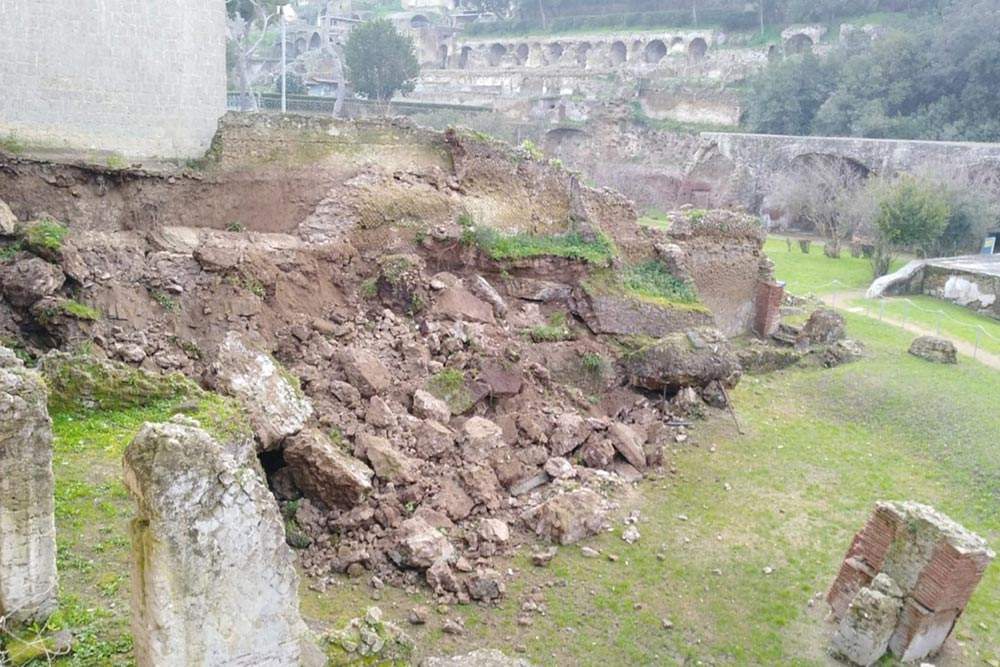While everyone cheers for Pompeii, a wall collapses at Baia's Roman Baths
While the press and Italians are rejoicing today over the latest discovery in Pompeii, announced just this morning, in the same region, a few kilometers further north, another important site, the Baths of Baia complex (which is part of the Campi Flegrei Archaeological Park institute), must instead deal with the collapse of a structure adjacent to a perimeter wall. This is according to the park management itself: an inspection was carried out today by the director of the Phlegraean Fields Park, Fabio Pagano, together with technicians and firefighters.
“In the evening of Friday, February 26, inside the Archaeological Park of the Baths of Baia,” reads a note, “there was the detachment of a portion of masonry near the perimeter area of the Park. The structure, which is located in an area already precluded from visiting routes, had previously undergone conservation work, partial securing and was under monitoring.”
As of this morning, the statement continues, “checks are being carried out by Park technicians to assess the precise causes that led to this phenomenon, to check the static situation of the entire area, also with the help of the Fire Department. And to define and initiate emergency procedures for securing and recovering the portion of the structure subject to detachment.”
The Baths of Baia are one of the most important sites in Campania and beyond. It is a vast, stratified thermal complex (there are traces ranging from the Republican age to the Severan era), situated in a scenic location on the Gulf of Bacoli, and characterized by some very imposing rooms, so large and monumental that in the past the local population led them to have given them names such as “temple of Diana,” “temple of Venus” and “temple of Mercury” even though in reality they were thermal buildings devoid of any cultic function. At the time of the Grand Tour, the baths of Baia were almost a must for travelers coming to the area.
Pictured: the collapsed portion of the wall.
 |
| While everyone cheers for Pompeii, a wall collapses at Baia's Roman Baths |
Warning: the translation into English of the original Italian article was created using automatic tools. We undertake to review all articles, but we do not guarantee the total absence of inaccuracies in the translation due to the program. You can find the original by clicking on the ITA button. If you find any mistake,please contact us.





























